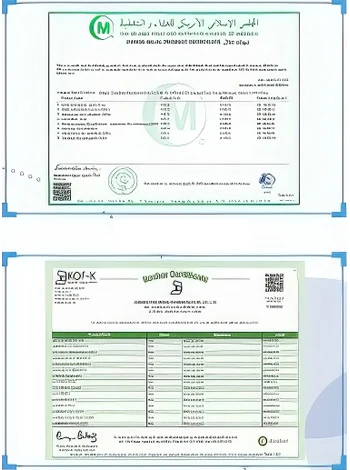



anhydrous naoh
Understanding Anhydrous NaOH Properties, Uses, and Safety Considerations
Anhydrous sodium hydroxide (NaOH), commonly referred to as lye or caustic soda, is a highly versatile chemical compound with extensive applications across various industries. Unlike its hydrated counterpart, NaOH (aq), which contains water molecules, anhydrous NaOH is in a solid state, appearing as white, odorless pellets or flakes. Its unique properties make it a valuable substance, although it must be handled with care due to its high alkalinity and corrosive nature.
Properties of Anhydrous NaOH
Anhydrous sodium hydroxide is characterized by its strong alkaline properties, with a pH level that can exceed 13. This makes it an effective agent in numerous chemical reactions and industrial processes. It has a high solubility in water, meaning it readily dissolves to form a strong alkaline solution. This solution can readily react with acids, resulting in the neutralization of harmful substances. The compound's high melting point, approximately 318 °C (604 °F), and hygroscopic nature (tendency to absorb moisture from the air) are also noteworthy.
From a chemical standpoint, anhydrous NaOH is a strong base that readily dissociates into sodium ions (Na⁺) and hydroxide ions (OH⁻) in solution. This dissociation is central to its functionality in various applications, including saponification, where it is used to produce soap from fats and oils, and in the manufacture of biodiesel.
Industrial Applications
One of the most significant uses of anhydrous sodium hydroxide is in the chemical industry, where it is employed as a key ingredient in the production of various chemicals, including sodium hypochlorite (used in bleaching) and sodium carbonate (soda ash). Moreover, it plays an integral role in the petroleum industry for refining processes, helping to remove impurities and sulfur compounds.
anhydrous naoh

In the food industry, anhydrous NaOH is used sporadically in food processing, particularly in curing olives and peeling fruits and vegetables, as it can effectively break down cell walls. Nonetheless, its use in food applications is heavily regulated due to safety concerns. It is also vital in water treatment processes, where it is used to regulate pH levels and precipitate heavy metals.
Safety Considerations
While anhydrous sodium hydroxide is beneficial, it poses significant health risks if not handled properly. As a caustic substance, it can cause severe chemical burns upon contact with skin or eyes. Inhalation of its dust can lead to respiratory issues, while ingestion can result in serious internal injuries. Therefore, safety precautions are paramount when working with this chemical.
To ensure safety, personal protective equipment (PPE) such as gloves, goggles, and face shields should be worn. It is also essential to work in well-ventilated areas and to have appropriate neutralizing agents available in case of spills or accidental exposure.
Training in handling, storing, and disposing of anhydrous NaOH is crucial for workers in industries that utilize this chemical. Proper storage in labeled, sealed containers away from incompatible materials is essential to prevent hazardous reactions.
Conclusion
Anhydrous sodium hydroxide is a powerful chemical with extensive applications in various sectors, ranging from industrial manufacturing to food processing. Its properties as a strong base and effective neutralizer make it indispensable. However, the associated health risks necessitate strict safety measures to protect those who handle it. Understanding both its applications and safety considerations is vital for anyone involved in industries that utilize anhydrous NaOH.
-
Why Sodium Persulfate Is Everywhere NowNewsJul.07,2025
-
Why Polyacrylamide Is in High DemandNewsJul.07,2025
-
Understanding Paint Chemicals and Their ApplicationsNewsJul.07,2025
-
Smart Use Of Mining ChemicalsNewsJul.07,2025
-
Practical Uses of Potassium MonopersulfateNewsJul.07,2025
-
Agrochemicals In Real FarmingNewsJul.07,2025
-
Sodium Chlorite Hot UsesNewsJul.01,2025










